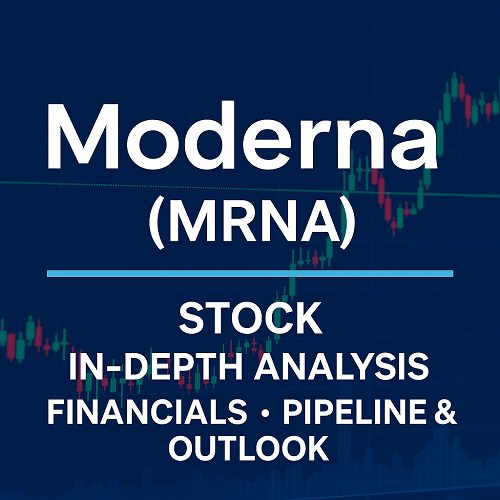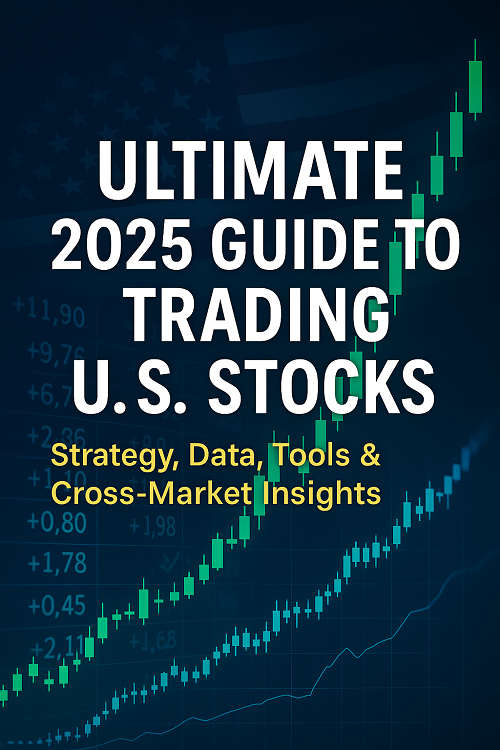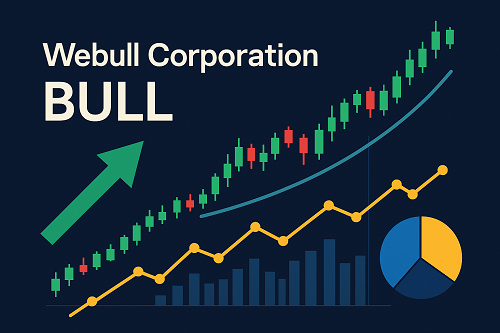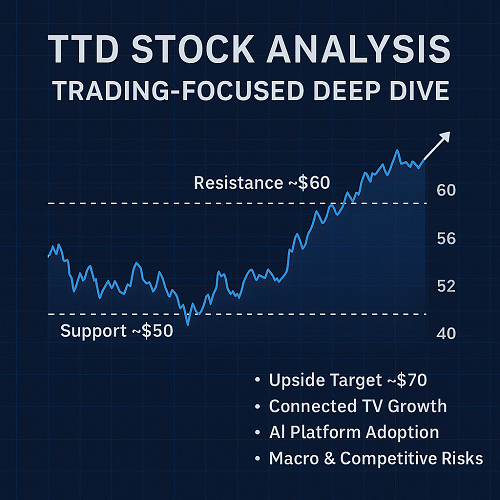Moderna, Inc. (NASDAQ: MRNA) is a pioneer in messenger-RNA (mRNA) therapeutics and vaccines. After skyrocketing during the COVID-19 pandemic, the company today faces a critical transition: declining COVID vaccine revenues, rising competition, and the urgent need to broaden its pipeline into infectious diseases, rare diseases, oncology and other areas.
This article provides an exhaustive review of:
- company background and technology
- business model and revenue drivers
- recent financial performance
- pipeline & R&D strategy
- key risks and competitive landscape
- valuation, investor outlook and long-term prospects
- actionable take-aways for investors and analysts
Our aim is to give far more depth than legacy profile pages, with structural SEO optimization for ranking (target keywords: “Moderna stock”, “MRNA stock analysis”, “Moderna pipeline”, “Moderna financials”, “Moderna outlook”).
##2. Company Overview & Technology Platform
###2.1 Company History
Founded in 2010 (originally as ModeRNA Therapeutics) by Derrick Rossi, Timothy A. Springer, Robert S. Langer, Kenneth R. Chien and Noubar Afeyan. Headquartered in Cambridge, Massachusetts, Moderna has grown into one of the leading biotech firms focused on mRNA technology.
Under CEO Stéphane Bancel (appointed 2011) the company rose to prominence with its COVID-19 mRNA vaccine (mRNA-1273, marketed as Spikevax).
###2.2 Core Technology Platform
Moderna’s fundamental differentiator is its synthetic messenger RNA (mRNA) platform: it programs cells to produce specific proteins (antigens or therapeutic proteins) rather than delivering the proteins themselves.
This platform has broad applications: infectious-disease vaccines (e.g., COVID-19, RSV, influenza), rare diseases, immuno-oncology, cardiovascular/autoimmune therapeutics.
Importantly, Moderna has built manufacturing/scaling competencies (lipid nanoparticle delivery, dose optimisation, cold-chain logistics) which became critical during the pandemic.
###2.3 Business Model & Revenue Drivers
The company’s revenue has two main pillars:
- Commercial vaccines – most notably the COVID-19 vaccine (Spikevax) and its follow-ons.
- Pipeline/therapeutics development – pre-commercial programs that hold long-term value.
Historically, the COVID-19 vaccine generated the vast majority of revenue; as that market recedes, Moderna must replace it with new commercial launches. This transition underpins much of the investor scrutiny.
##3. Recent Financial Performance & Key Metrics
###3.1 Revenue Trajectory
Moderna’s revenue has declined sharply from pandemic-era highs: for example, revenue slipped to approximately US$3.2 billion in 2024 from much higher levels previously.
Specifically: in Q2 2025 the company reported revenue of US$142 million, down ~41 % from US$241 million in Q2 the prior year.
The drop is driven primarily by lower COVID-19 vaccine volume and the shift from emergency use to endemic/responsive markets.
###3.2 Cost Profile & Margins
Cost of sales in Q2 2025 was US$119 million, roughly flat versus prior year, but represented ~105% of net product sales (versus ~62% in the year-ago quarter) reflecting the lower revenue base.
R&D expenses in Q2 2025 fell ~43% year-on-year, to approximately US$700 million, reflecting lowered clinical trial/manufacturing expenditure and wind-down of some programmes.
###3.3 Profitability & Liquidity
The company remains unprofitable, with large operating losses as it invests heavily in R&D and transitions the business model.
Cash reserves remain sizeable, but the burn and revenue decline raise questions over future capital needs and dilution risk.
###3.4 Outlook & Guidance
Moderna’s guidance is cautious: for example, the company projected 2025 revenues in the range US$1.5-2.5 billion (significantly down from prior expectations).
Cost-cutting efforts: targeting US$1 billion in cost reductions in 2025, with additional US$0.5 billion in 2026.
##4. Pipeline & Strategic Focus
###4.1 Therapeutic/Commercial Portfolio
Moderna is prioritising a focused portfolio: respiratory viruses (COVID, RSV, influenza/combos), rare diseases, oncology, latent/other viruses.
Key commercial product: RSV vaccine (mRESVIA) approved for adults aged 60+ in the U.S. in 2024.
Clinical pipeline: includes influenza vaccine programmes, CMV vaccine, personalized cancer vaccines (neoantigen therapies), rare disease mRNA therapeutics.
###4.2 Competitive Advantages & Risks
Advantages:
- First mover in mRNA technology with scale and know-how.
- Strong manufacturing infrastructure and partnerships.
- Broad addressable market beyond infectious disease.
Risks:
- Heavy reliance on success of new commercial launches.
- Competition (e.g., from GlaxoSmithKline plc (GSK), Pfizer Inc. in RSV/influenza) and changing vaccine policy.
- Revenue cliff from waning COVID-19 vaccine demand.
- Execution risk: regulatory approvals, manufacturing scale, reimbursement, uptake.
- Potential need for additional capital if losses continue.
###4.3 Timeline & Key Milestones
Investors should watch for:
- Regulatory filings and approvals for influenza/combination vaccines.
- Phase III data readouts (CMV, personalized cancer vaccines).
- Commercial rollout and uptake of RSV vaccine in younger adults.
- Manufacturing expansion and cost-structure improvement.
- Capital allocation, cost-cutting execution, margin profile improvement.
##5. Competitive Landscape & Macro Context
###5.1 Industry Trends
The vaccine and mRNA therapeutics market is evolving: from pandemic-response to endemic seasonal vaccines, increasing regulatory scrutiny, and rising competition.
Vaccine scepticism, regulatory delays, and supply-chain/logistics complexity all present headwinds.
mRNA therapeutics beyond vaccines (rare diseases, cancer) remain nascent—success is uncertain but offers long-term upside.
###5.2 Peer & Competitor Snapshot
- GSK and Pfizer are prominent in RSV and influenza vaccines.
- Smaller mRNA/biotech companies (e.g., BioNTech SE) compete on platform innovation.
- Traditional pharma remains formidable in regulatory, commercial and global reach.
###5.3 Positioning of Moderna
Moderna has the platform lead, but the business model pivot is under pressure: can it turn its technology edge into a diversified, commercially successful portfolio beyond its COVID vaccine legacy? That question frames much of the investment thesis and risk.
##6. Valuation & Investor Outlook
###6.1 What the Market Is Paying For
Given revenue decline and operating losses, traditional valuation metrics (P/E) are not applicable. Investors focus on forward‐looking potential: pipeline approvals, revenue regeneration, cost reductions. Analysts have flagged that break-even on cash flow may not occur until 2029 or later.
###6.2 Key Investment Themes
Bull case:
- Successful commercialisation of RSV, influenza/combination and other vaccines → multi-billion dollar revenue stream.
- mRNA therapeutics launch into rare diseases/cancer → high‐margin business.
- Cost structure improves, manufacturing scale helps margins.
- Growing acceptance of mRNA therapeutics beyond vaccines.
Bear case:
- Revenue cliff continues, new product launches delayed or unsuccessful.
- Competitive pressures compress pricing/reimbursement.
- High R&D/cost burn leads to capital raises/dilution.
- Policy/regulatory setbacks reduce addressable market.
###6.3 Key Metrics to Monitor
- Future revenue guidance and actuals.
- Gross margin improvements and cost of goods sold (COGS) trends.
- R&D spending vs pipeline progress (especially late-stage assets).
- Cash burn and runway: free cash flow, need for debt or equity raises.
- Approval milestones and commercial uptake figures.
- Market share for respiratory vaccines vs competitors.
###6.4 Current Stock Outlook
Given the shift in business fundamentals, MRNA reflects a high-risk/high-reward biotech opportunity: much depends on execution rather than legacy performance. The current stock price (as of latest public data) embeds expectations of turnaround, not just continuation of pandemic-era revenue. Investors must weigh the probability of success vs failure.
##7. SWOT Summary
Strengths:
- Market-leading mRNA platform and manufacturing capabilities.
- Experience scaling for global vaccine deployment.
- Broad therapeutic ambition beyond infectious disease.
Weaknesses:
- Revenue dependence on COVID-19 vaccine legacy.
- Large R&D and operating losses for the near term.
- Competitive and regulatory pressures in vaccine markets.
Opportunities:
- Commercial launches of new respiratory/viral vaccines (RSV, influenza, COVID combos).
- Expansion into rare diseases and oncology via mRNA therapeutics.
- Global vaccine demand (emerging markets, pandemic preparedness).
Threats:
- Failure or delay of product launches / regulatory setbacks.
- Market saturation, price erosion and vaccine policy shifts (e.g., lower booster uptake).
- Need for capital/ dilution if cash burn continues.
- Technological/competitive disruption (other platforms beyond mRNA).
##8. Key Take-aways & Investor Actions
- Transition phase: Moderna is no longer riding the pandemic wave—it is shifting into a commercial-pipeline stage. Investors should view the company as a platform play with execution risk, not a legacy COVID-cash-cow.
- Pipeline matters: The success of future revenue hinges on approvals and commercial traction of new vaccines and therapeutics. Watch regulatory filings, Phase III results and launch data.
- Cost discipline is critical: With revenue dropping, margin improvement and cost containment are vital to avoid further profit erosion or dilution.
- High risk, high reward: The upside is meaningful if Moderna executes; the downside is significant if it fails to deliver.
- Valuation reflects expectations, not history: Given the legacy revenue decline, the stock price is discounting future growth – investors must be confident in the growth path.
##9. Frequently Asked Questions (FAQ)
Q1: Is Moderna still profitable?
No. Moderna remains unprofitable, as substantial R&D and transition costs outweigh the reduced revenue base. For example, Q2 2025 revenue fell ~41% compared to prior year.
Q2: What is Moderna’s next major product launch?
The company is focusing on respiratory vaccines (RSV, influenza, COVID/flu combination), along with pipeline assets in oncology and rare disease. For instance, the RSV vaccine mRESVIA is already approved for adults 60+.
Q3: How does Moderna compare to its peers?
Moderna leads in mRNA platform technology, but peers such as GSK and Pfizer have vaccination scale and diverse portfolios. Moderna faces competition and must prove that it can commercialise beyond COVID.
Q4: What are the biggest risks for Moderna investors?
Key risks include product launch failures/delays, revenue decline continuing, need for additional capital, intense competition, policy/regulatory headwinds, and margin erosion.
Q5: What should investors monitor in upcoming quarters?
- Revenue guidance and results
- Gross margin trends / COGS improvement
- R&D spending / pipeline milestones
- Cash burn / liquidity
- Regulatory approvals and commercial rollout data
##10. Conclusion
Moderna, Inc. stands at a pivotal crossroads. As the vaccine-maker emerges from its pandemic-era boom, the company’s future depends heavily on whether its mRNA platform can deliver new commercial successes in a competitive, post-pandemic world.
For investors, Moderna presents a compelling tech-biotech play: the upside is significant, but so are the execution risks. The company’s ultimate valuation will hinge not on what it did during the pandemic, but on what it does next.





 XAUT-USD
XAUT-USD  AMD
AMD  MARA
MARA  SHOP
SHOP  BULL
BULL  CL=F
CL=F